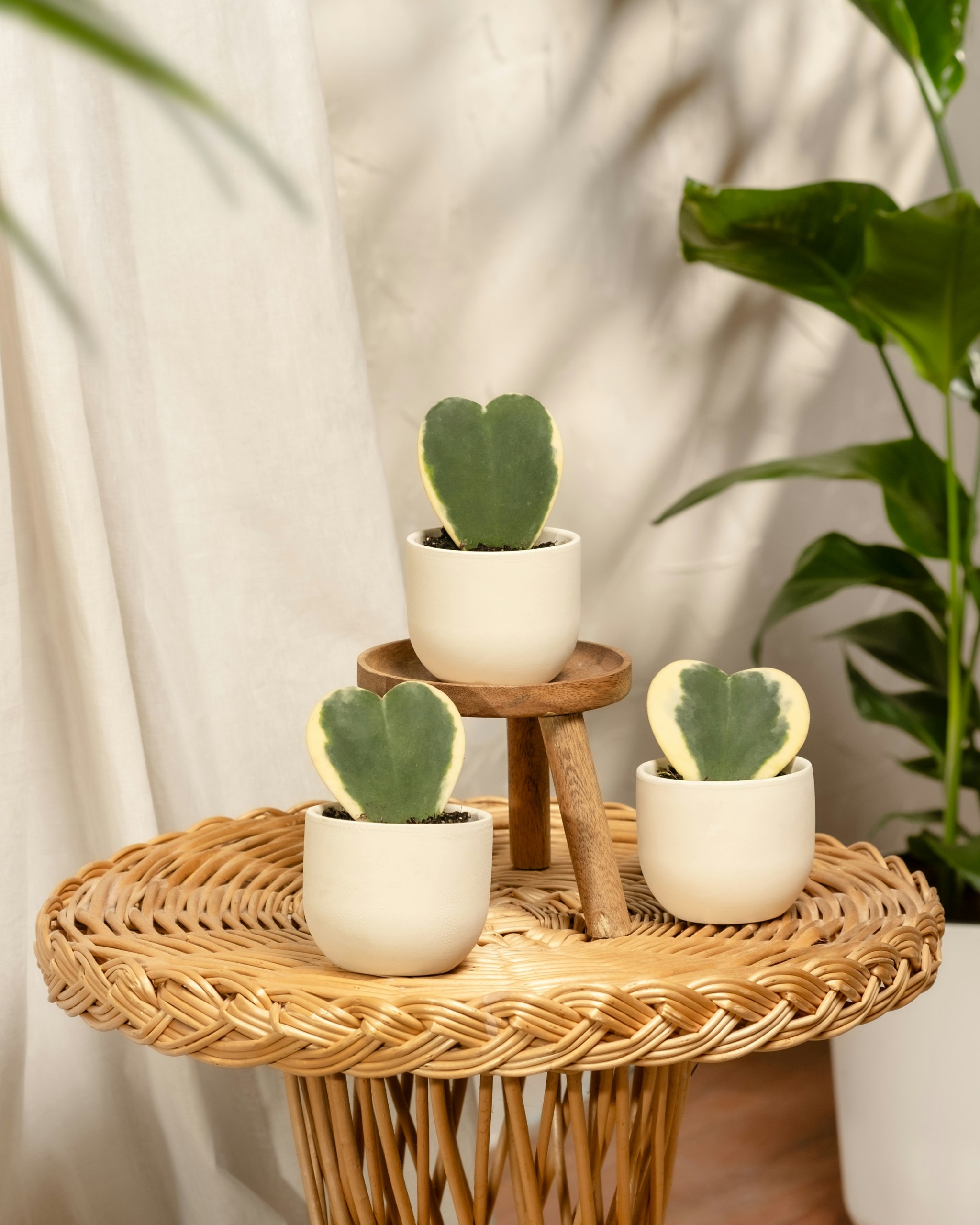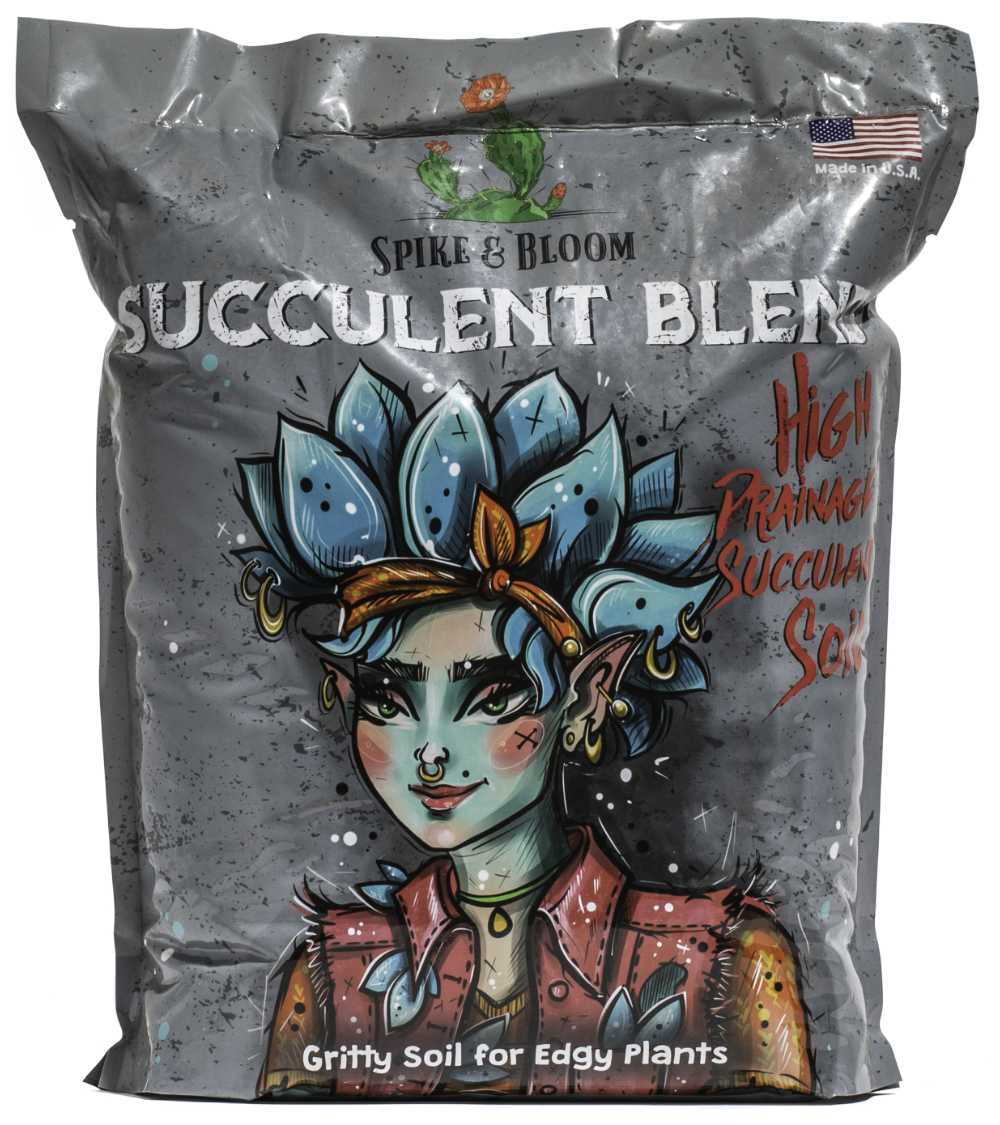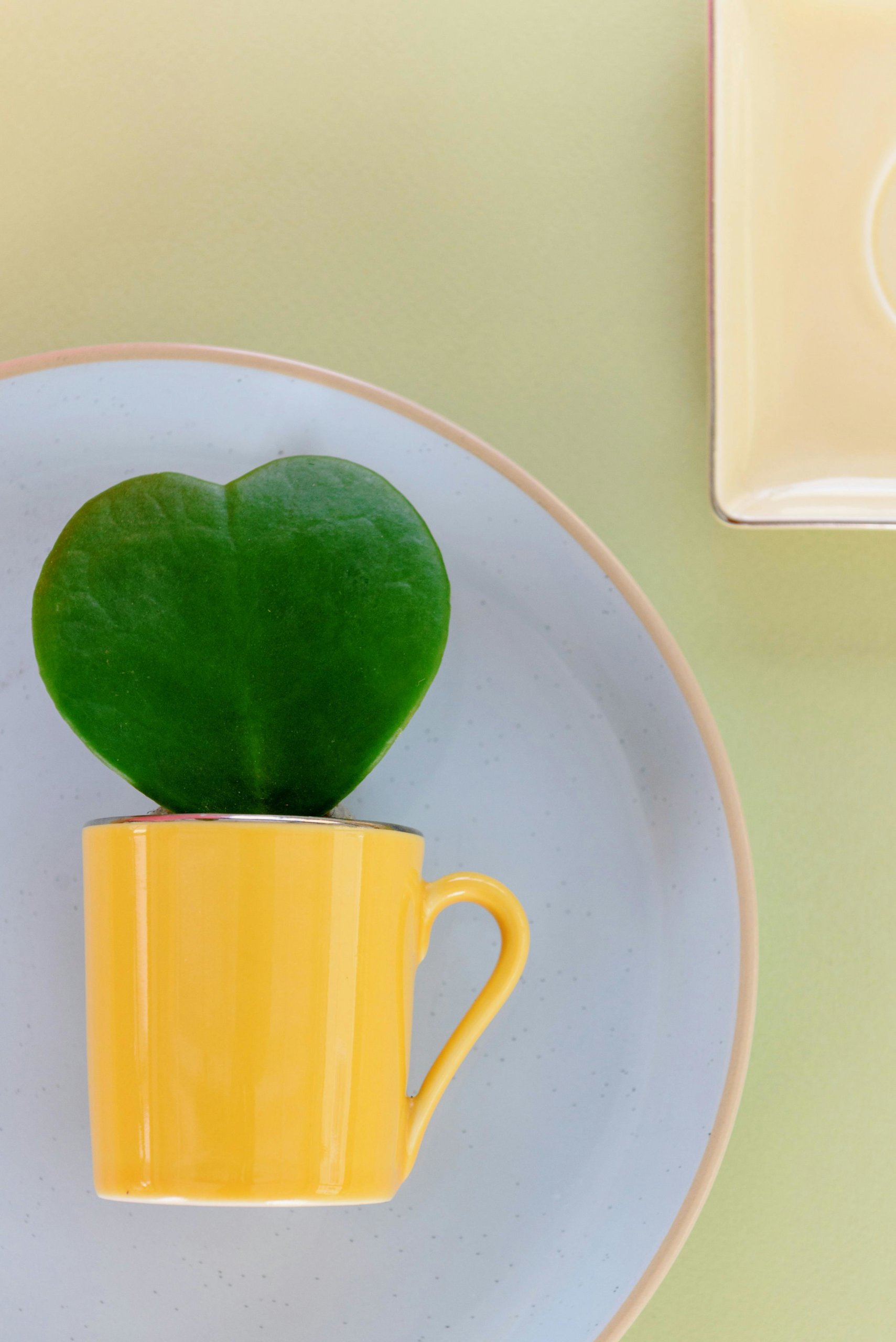Hoya Kerrii Care
Hoya kerrii, also called the heart-shaped hoya, is a popular plant known for its thick, heart-shaped leaves and easy care requirements. This plant adds a unique look to any windowsill or shelf, and it is often given as a gift during Valentine’s Day because of its appearance.
If you want your hoya kerrii to thrive, give it plenty of bright, indirect sunlight, water it only when the soil feels dry, and use well-draining soil to prevent root rot. With the right care, your heart-shaped hoya can grow slowly but steadily, staying healthy for years.
Fundamentals of Hoya Kerrii Care
Hoya kerrii is a popular houseplant known for its heart-shaped leaves and slow growth. Giving your plant the right spot, proper light, and careful watering helps it stay healthy and attractive.
Choosing the Right Location

Place your Hoya kerrii in a spot where it will not be in direct hot sunlight. A bright room with plenty of natural light works best. Windows with filtered light or those facing east or west are ideal.
Avoid locations where temperatures drop below 60°F (16°C). Steer clear of cold drafts and heat vents, as they can stress your plant. Hoya kerrii enjoys mild to warm indoor conditions typical for most homes.
If you have limited sunlight, you can use a grow light. Make sure it is not too close, as too much light can burn the leaves.
Light Requirements
Hoya kerrii grows best in bright, indirect light. Direct afternoon sun can scorch the leaves and cause yellowing or spots. Too little light, on the other hand, will slow growth and may prevent new leaves from forming.
A sheer curtain over a window helps diffuse light. Placing the plant a few feet away from a sunny window will also keep it safe from harsh rays. If you notice the plant reaching for light, try moving it a bit closer to the window.
Low light is not fatal, but the plant may remain dormant or grow even slower. Aim for at least 6 hours of filtered sunlight each day for best results.
Watering Guidelines
Let the top 1-2 inches of soil dry out before watering again. Hoya kerrii is easy to overwater, which can cause root rot. The plant’s thick, succulent-like leaves store moisture, so it needs less water than many other houseplants.
Use a pot with drainage holes and well-draining soil. In the summer, you will likely need to water every 2-3 weeks, depending on humidity. In winter, watering once a month is usually enough.
Never let your Hoya kerrii sit in water. Empty any water collected at the bottom of the pot. If the leaves look wrinkled or soft, the plant may need a bit more water, but if they’re yellowing or mushy, cut back.
Optimizing Growth and Health of Hoya heart plant
Proper growth and health depend on matching your Hoya heart’s needs in soil, feeding, temperature, and how you propagate the plant. Paying attention to these details helps keep this Southeast Asian native healthy and encourages strong, steady growth.
Ideal Soil and Potting Mix
Hoya kerrii needs a soil mix that drains very well. Regular potting soil is often too dense and holds too much water, which can lead to root rot. Use a well-draining mix designed for succulents or make your own with equal parts potting soil, perlite, and orchid bark.
The mix should let water flow out easily. This will give the roots enough air to stay healthy. You can also add a handful of coarse sand for extra drainage if your home is humid.
However, mixing your own means buying big bags of different ingredients, and you’ll likely have a lot left over.
Our succulent soil has everything your Hoya needs already mixed in. It’s easier, less wasteful, and gives your Hoya kerrii the best chance to thrive.

Choose a pot with drainage holes. Never let your plant sit in standing water. Repot every 4-5 years, or when the roots outgrow the container. A fresh mix will help keep nutrients available and prevent disease.
Proper Fertilization
Fertilize your Hoya kerrii during the growing season, which is usually spring and summer. Use a balanced, water-soluble fertilizer once a month. A common ratio to look for is 10-10-10 or 20-20-20 (nitrogen-phosphorus-potassium).
Do not fertilize during fall and winter. The plant’s growth slows down at this time, so there is less need for extra nutrients. Too much fertilizer can hurt the roots or cause leaf burn.
Apply the fertilizer when the soil is moist to avoid root damage. If your fertilizer is strong, dilute it to half the recommended strength. Always follow the directions on the label for best results.
Quick tips:
- Fertilize monthly in spring/summer
- Skip feeding in fall/winter
- Use a balanced fertilizer
Temperature and Humidity

Hoya kerrii comes from warm areas in Southeast Asia. Keep temperatures between 60°F and 75°F (16°C to 24°C) for best growth. Avoid placing your plant in spots with cold drafts or sudden temperature changes.
Low temperatures can slow or stop the plant’s growth. Sudden chills or overheating can even hurt the leaves. If you keep the plant outside, bring it indoors before the temperature drops at night.
Humidity should be moderate. Hoya kerrii tolerates dry air but grows better if humidity is 40% or higher. If the air in your home is dry, you can use a small humidifier or mist the leaves lightly once in a while.
Do:
- Keep warm and steady temperatures
- Avoid drafts and extreme heat
- Raise humidity if air is very dry
Propagation Techniques
Hoya kerrii is most often propagated by stem cuttings. Choose a healthy stem with at least one leaf and a node (the part where roots will grow). Use a clean, sharp blade to avoid infecting the plant.
Let the cutting dry for a few hours so the cut end can callous over. This helps prevent rot. Place the stem in water or in moist, well-draining potting mix. Keep the cutting in a warm room with bright, indirect light.
Roots should form in a few weeks. Once roots are about 1-2 inches long, you can plant your cutting into soil. Keep the soil slightly moist until you see new growth.
Steps to propagate:
- Take a healthy cutting with at least 1 node
- Let the cut end dry for several hours
- Place in water or use well-draining soil
- Keep warm and bright
- Transplant when roots reach 1-2 inches
Patience is key. Hoya kerrii can be slow to root, but healthy cuttings usually succeed if given proper care.
Decorative Uses and Maintenance Tips
Hoya kerrii, or the lucky-heart plant, is not just easy to care for but also fits well as a charming houseplant. With the right placement and attention, your heart-shaped Hoya can stay healthy and attractive all year.
Popular Aesthetic Uses
The heart-shaped Hoya is best known for its unique, heart-shaped leaves. People often use it as a decorative gift for holidays like Valentine’s Day or anniversaries. It is also popular on office desks and windowsills where space is limited.
You can display Hoya kerrii as a single-leaf cutting in a small pot or grow it as a vine in a hanging basket. Its bright green color and thick leaves add a fresh, neat look to modern and rustic décor. Some use it as a centerpiece or group it with other succulents on a shelf for a low-maintenance arrangement.
If you want your plant to grow faster and bloom, provide bright, indirect sunlight. Rotate your plant every few weeks for even growth. Make sure the container matches your home’s style but also has good drainage.
Pruning and Shaping lucky-heart plant
Pruning is simple but important for a healthy Hoya kerrii. Use clean scissors or pruning shears to trim away any dead or damaged leaves. This helps the plant focus its energy on new growth.
For vining types, you can shape the plant by training the vines around a small trellis or hoop. Gently guide the stems to avoid breakage. If your Hoya kerrii grows too long, cut it back to keep a tidy shape.
Remove yellow or wilted leaves as they appear to prevent rot. When you prune, avoid cutting the main vine, as this is where new leaves and blooms form. Regular shaping can also help prevent tangling and keeps the plant looking neat.
Dealing With Common Problems

Hoya kerrii is tough, but some problems may still show up. Wilting leaves often mean overwatering. Let the soil dry out before you water again. Soft or yellow leaves can signal too much water or cold drafts.
If you notice brown spots or dry edges, your plant may need more humidity or is getting too much direct sun. Spider mites and mealybugs are common pests that can affect Hoya kerrii. Wipe the leaves with a damp cloth or use insecticidal soap if pests show up.
Check the soil and roots if your heart-shaped Hoya stops growing for long periods. Make sure the pot has drainage holes and that roots are not crowded. Keep the temperature between 60°F and 75°F to avoid stress on the plant.

